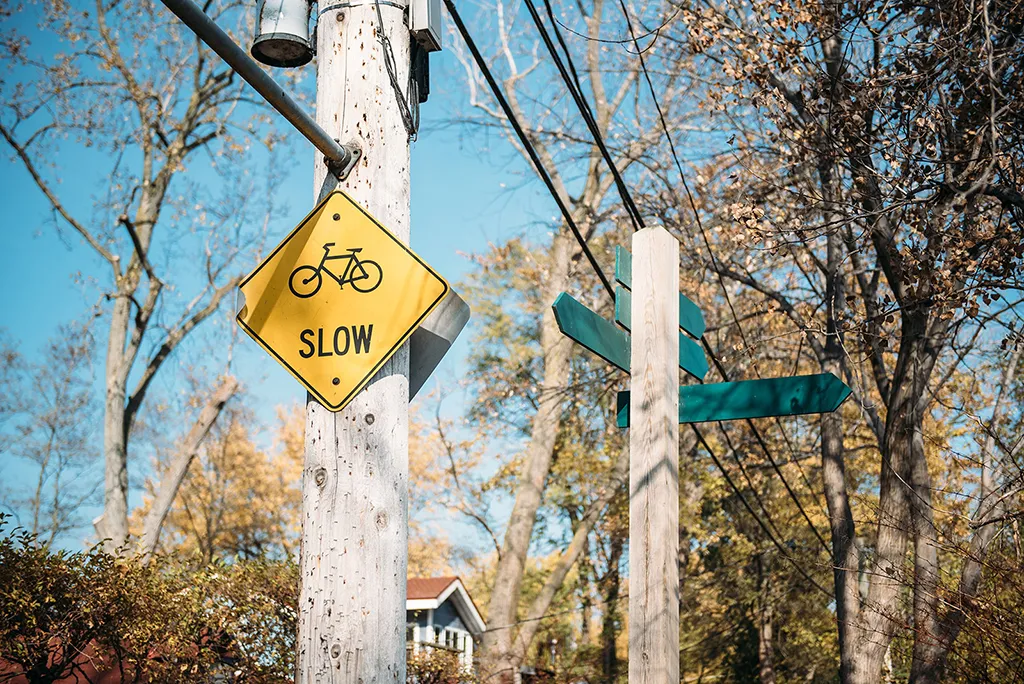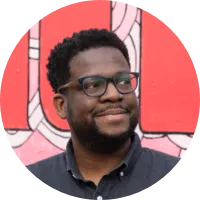Learning to go fast by moving slow

Being productive while managing Generalized Anxiety Disorder.
This article was original published in The Human in the Machine
At the end of 2016, I was diagnosed with Generalized Anxiety Disorder (GAD). Before I was diagnosed my friends, family, and co-workers were treated to the front row seat of my slow transition from a patient person to an irritable shell of myself. They could clearly see the change in me, just as clearly as you could tell the difference between night and day.
But I was clueless.
Everyone’s experience with GAD is different, but one of its most common traits is slow onset. Much like a frog being boiled alive in a pot of water, GAD’s trick is that it slowly progresses from reasonable to extreme anxiety. For me, many of the symptoms felt like the simple result of living life.
Because I’m an aging athlete, I assumed all of my new injuries were related to sports injuries and not increased muscle tension…
Because I’m lactose intolerant, I didn’t notice that my stomach started to respond to stress and not just the occasional dairy I ate…
Because I have a lot of things on my plate, I didn’t notice that my difficulty staying on task steadily increased…
Because I’m a light sleeper, I didn’t notice the amount of sleep I got dropped from 7 hours to 2 a night…
As the list of symptoms grew, I found that I needed an increasingly wide array of doctors to help my body function day-to-day. It wasn’t until my symptoms progressed to internal bleeding from stress-induced ulcers that I put all of the pieces together.
Thankfully, a friend recommended that I see a psychologist, someone that could evaluate my symptoms against potential psychological issues and help me find a path forward.
Nearly a year later, I’m in a much better place. I’ve had to overcome many hurdles but the biggest one so far has been learning how to work while sustaining bouts of heavy anxiety.
Learning to work differently.
One of GAD’s major complications is that it impairs “your ability to perform tasks quickly and efficiently because you have trouble concentrating.”[1]
It’s natural for a person’s mind to drift during a task. In fact, research suggests that the average human attention span is now just 8 seconds (1 second less than a goldfish).[2]
However, for someone suffering from GAD, our brains can see things as bigger and more dangerous than reality. A fleeting thought you may have had about picking up cooking oil from the store, can turn into a 10-minute anxiety spiral for me. By the end of which, I’m left questioning why anybody on the planet would eat my cooking in the first place.
I’ve tried a number of things to combat my newfound lack of focus. Here’s what’s worked for me so far (your mileage may vary).
1. Develop an early detection system for anxiety.
This was the most difficult and critical part of regaining control of my own anxiety. There are a lot of techniques that can bring me back down if the anxiety gets too high, but catching anxiety early is the most important thing anyone can do.
To respond to threats, real or perceived, the brain can act without thought. In fact, “the brain always initially handles threats without necessarily invoking consciousness; it only sometimes adds a conscious component.“[3]
Because it was difficult to consciously recognizing my own anxiety, I needed to find an alternative strategy. For me, the best way to evaluate my anxiety is through muscle tension. That’s right, one of my symptoms has become my best tool. I check-in with my body every 30 mins or so to see how I’m doing. I do a quick head-to-toe sweep looking for spots where my body is abnormally tight.
Is my jaw clenched?
Is my neck tight?
Are my trapezoids over engaged?
Am I breathing calmly?
Are my feet curled?
Is my body bracing for some sort of impact?
If I find tension, I take a break.
2. Take real breaks.
In our culture, it’s hard to stop and take a break. We expect results now. But work is a marathon, not a sprint. And like runners that utilize run/walk regiments to complete long-distance races, I need regular intervals of lowered intensity to be my most productive.
Every 25-30 mins I try to take a 5-minute break. I don’t mean 5 minutes of reading email, surfing the web, or chatting with co-workers — I mean 5 minutes of doing nothing. Instead of giving my mind a new task to focus on, I let it relax and fall into its natural relaxed state.
If my mind is especially distracted, I use meditation or breathing techniques to help my mind re-center itself.
My favorite re-centering technique is an exercise I learned from CBT (cognitive behavioral therapy) called “5-4-3-2-1.” During this exercise, you’re asked to identify 5 things you can see, next 5 things you can hear, and then 5 things you can feel. You repeat the exercise 4 more times and decrement the count each time. After the exercise, my mind is clear, focused, and ready to take on new challenges.
3. Be patient with yourself and honest with others.
The most difficult thing I’ve learned to accept is that I’m no longer my previous self and I may never be. In the past, I have coded a website from scratch in less than 24 hours. Today, that’s likely impossible for me.
Although I haven’t actually lost any production speed, when focused I may actually be faster than I used to be, I do require more time so that I can manage my anxiety while I work and not let it over-power me. Sometimes work goes smoothly and my anxiety is well behaved, but other times I may need to step away for a few hours.
Before I take on any new task, I ask myself how much anxiety will this contribute to my life? For things I’ve done a million times, it’s unlikely my anxiety will be problematic. For tasks that are new, high-pressure, have a high degree of complexity, and/or are outside of my comfort zone I know that anxiety will likely slow me down.
It’s important that the people I work with know if a slow work-day is coming, so I tell them.
Telling them makes me vulnerable to criticism and backlash, some people will never understand what it’s like to be paralyzed by anxiety. I’ve heard my fair share of cringe-worthy responses. I’ve also heard a wide-range of deeply compassionate responses and inspirational responses too.
Most importantly, I let people know about my disorder because it’s one less burden to bear alone and, in a supportive environment, gives my friends and colleagues an opportunity to help alleviate some of my anxiety.
Everyone’s struggles with anxiety are different. However, if you are suffering from anxiety or any other disorder, please see a trained professional. I am not a doctor, nor should this article be interpreted as medical advice.
